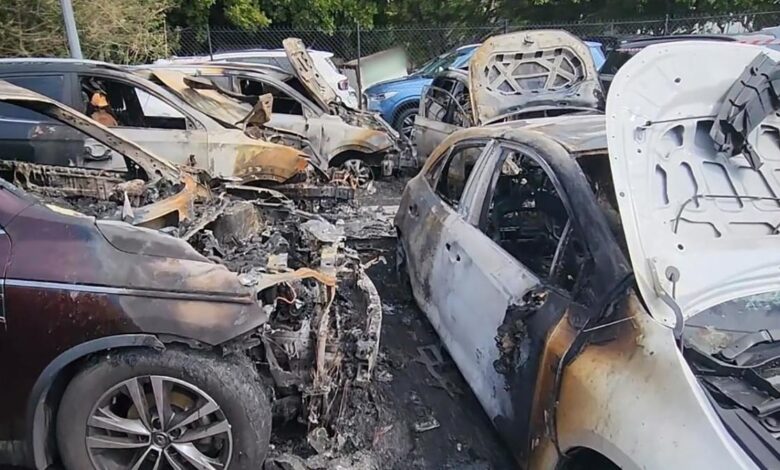EV crash victims could be left to die in battery fires

Challenges involved in saving passengers from electric car crashes could see victims dragged from vehicles by firefighters or, in the most extreme cases, left to die, an inquiry has been told.
The NSW government’s Electric and Hybrid Vehicle Batteries Inquiry heard testimony from fire and rescue services, paramedics, the Motor Traders’ Association, and TAFE on Tuesday in its second public hearing.
The inquiry heard Australia’s first responders, mechanics and tow truck drivers did not have adequate training to deal with electric vehicle collisions, and gaps in their knowledge had the potential to put lives at risk.
In the most serious incidents, firefighters said crews could be forced to abandon rescues or crudely rescue passengers from vehicles, and were being left “flying blind” at battery fires.
The warnings came after the inquiry’s first sitting heard the number of electric car fires in Australia remained low, and the government should introduce regulations for electric bikes and scooters due to a rising number of incidents.
Fire and Rescue NSW Commissioner Jeremy Fewtrell told the inquiry the service was “not opposed in any way to electric vehicles” but had serious concerns about their potential fire risks and training available to emergency workers.
Mr Fewtrell said the fire service had “very limited experience” with electric vehicle collisions but fires involving their batteries took longer to extinguish and their volatile nature could make extracting injured passengers more challenging and rushed.
“We’ve spent many years developing very patient-centred rescue techniques to keep casualties safe, immobilise them, get the car away from around them,” he said.
“What may happen where batteries start igniting as a result of a crash, it becomes a very crude extrication technique of dragging a casualty out in a very undesirable manner.”
VRA Rescue NSW Commissioner Brenton Charlton told the inquiry worse outcomes were also possible, including battery explosions in which a rescue operation would put emergency workers at risk.
“We need to prepare ourselves and our volunteers… for the point in time we have to do a tactical disengagement, meaning if someone’s trapped and it does high order (explode) you might not be able to do anything,” he said.
“That will be a tragic, horrible thing to take part in.”
Mr Fewtrell said the service was working to develop battery-handling training with TAFE but firefighters were already facing challenges in the field, including a recent blaze in an electric bus factory that did not have warning signs about the type of technology involved.
Motor Traders’ Association of NSW government relations head Collin Jennings said mechanics and drivers also needed education in how to safely handle electric vehicles but were struggling to access it.
“There has been an under-investment in training the NSW workforce,” he said.
“The adequacy of this training is crucial to ensure that technicians can effectively and safely work on EVs.”
Mr Jennings said funding for electric vehicle training was unavailable or had run out, and tow trucks drivers would also require training as they were often first on the scene of a vehicle accident.
The NSW inquiry, which will probe risks posed by electric and hybrid vehicle battery technology, began in September last year.



